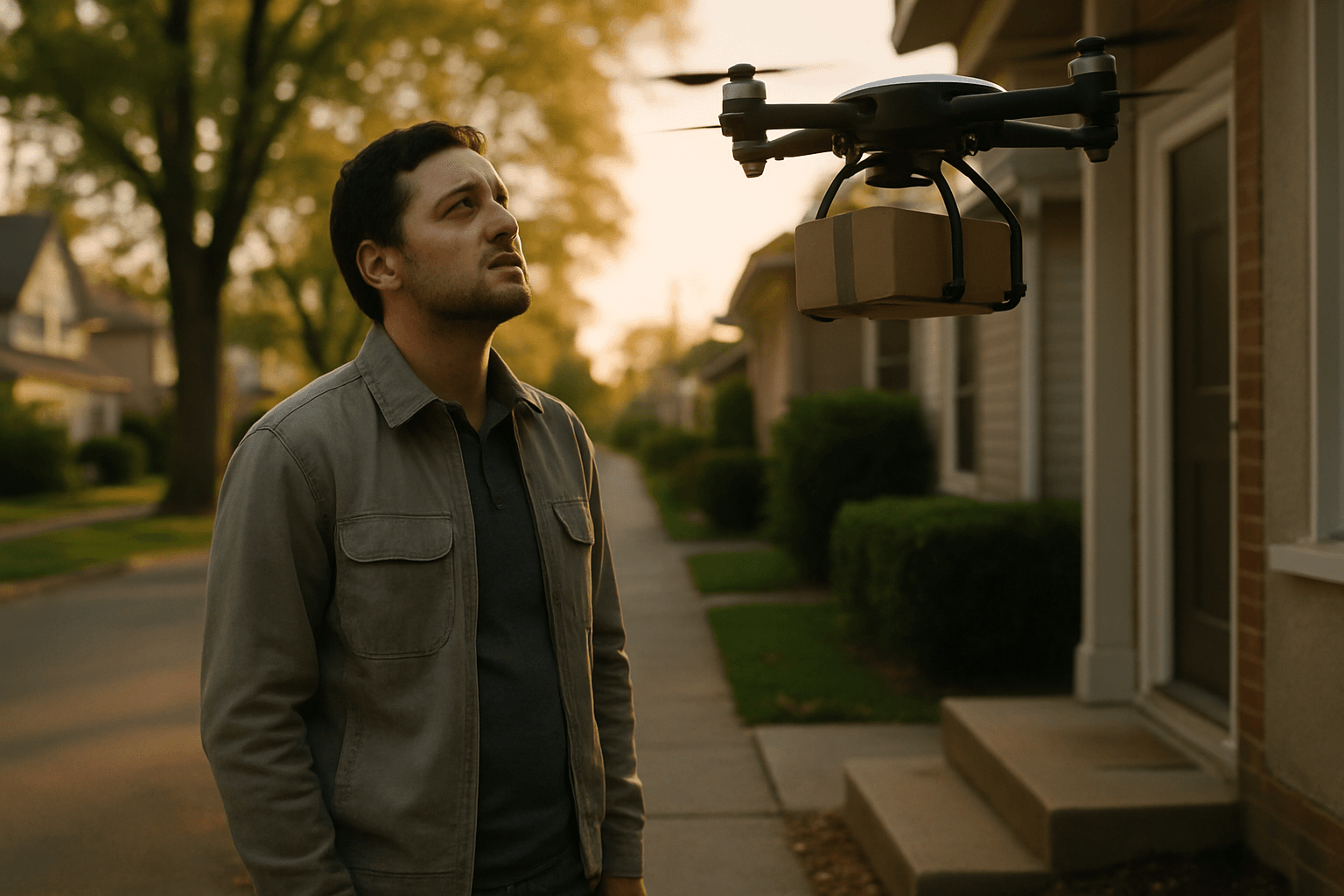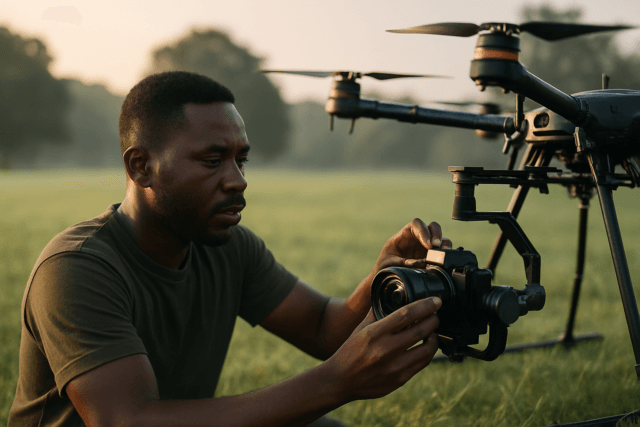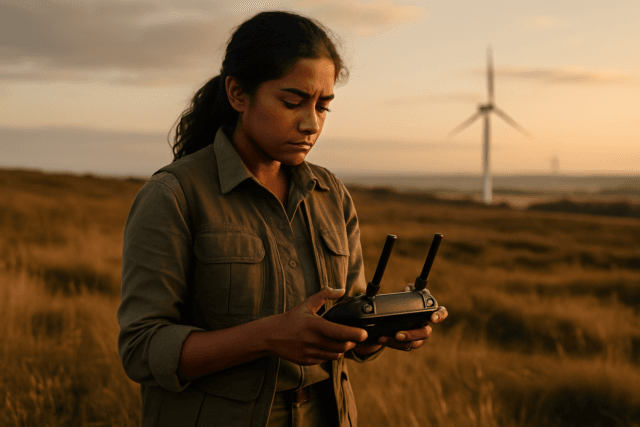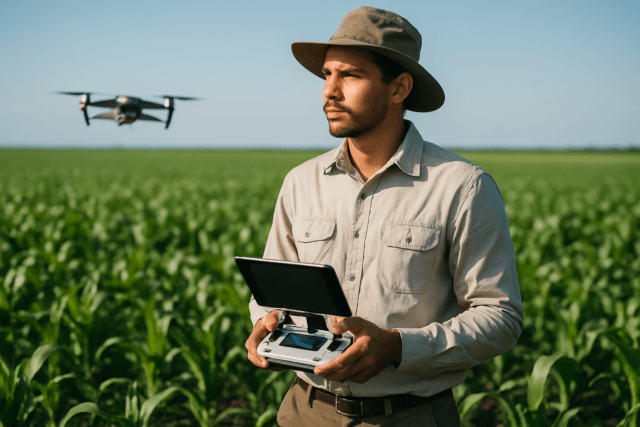The promise of widespread drone delivery conjures images of rapid, efficient, and even futuristic logistics, transforming how goods reach our doorsteps. However, as this innovative technology moves from nascent trials to broader implementation, a complex web of ethical considerations emerges, demanding careful examination before it truly takes flight across our communities. From privacy intrusions to environmental impacts and shifts in employment, understanding these multifaceted dilemmas is crucial for responsible development and public acceptance.
Privacy and Data Security: Eyes in the Sky
One of the most immediate and significant ethical concerns surrounding drone delivery is the potential for widespread surveillance and data collection. Drones, often equipped with cameras, GPS systems, and other sensors, can inadvertently or intentionally capture sensitive information.
Surveillance Fears and Data Collection
Delivery drones could be perceived as “eyes in the sky,” leading to public apprehension about unauthorized monitoring of private properties and personal activities. These UAVs can collect a wide array of data, including high-resolution images, video footage, audio, and precise geolocation data. Some drones might even collect thermal imaging or biometric data, raising substantial legal concerns.
Tracking and Identification Risks
Mandatory safety regulations, such as Remote ID, require drones to broadcast their locations and unique identifiers. While essential for air traffic management, this also allows third parties to track drones from vendors to customer locations, potentially linking individuals to their purchases, including sensitive items like prescription medications. This raises concerns about how such data is collected, stored, and used by companies and potentially exposed through data breaches. Transparency in data collection practices and adherence to strict privacy laws are vital to mitigate these risks.
Safety and Public Well-being: Navigating the Airspace
The integration of numerous autonomous aircraft into civilian airspace introduces inherent safety challenges, necessitating robust regulatory frameworks and technological safeguards.
Risk of Accidents and Malfunctions
Drones are susceptible to various operational failures, including battery exhaustion, motor malfunctions, sensor failures, or loss of signal, which could cause them to crash. Such accidents pose risks of injury to people, damage to property, or harm to wildlife. Factors like extreme weather conditions (e.g., high winds, rain, snow) can significantly impact flight safety and efficiency.
Collision Avoidance and Airspace Management
An increase in drone traffic escalates the risk of collisions with other drones, manned aircraft, or ground objects. While technology for automatic detection and avoidance is maturing, it requires further development to enable safe beyond visual line of sight (BVLOS) operations, which are crucial for widespread delivery. The lack of a global standard and the patchwork of federal, state, and local regulations further complicate effective airspace management and accountability.
Environmental Impact: A Mixed Bag
The environmental implications of drone delivery are complex, offering both potential benefits and drawbacks compared to traditional ground transportation.
Noise Pollution
Drones produce a distinctive buzzing sound, which can be a significant source of noise pollution, especially in residential areas. Studies suggest that drone noise can be perceived as more annoying than traditional vehicle noise and can even lead to increased stress levels, even at lower decibel levels, due to its higher-pitched nature. Careful planning of flight paths, restricted operating hours, and the development of quieter drone designs are essential to address this concern.
Carbon Footprint and Resource Consumption
While electric-powered drones can reduce greenhouse gas emissions compared to diesel trucks, particularly for small packages over short distances in areas with clean energy grids, the overall environmental impact is multifaceted. The energy and materials consumed during drone manufacturing, maintenance, and the disposal of batteries contribute to their environmental footprint. Larger drones, longer distances, and less clean energy sources can diminish these environmental benefits. Debris from drone crashes also presents an environmental risk.
Socioeconomic Equity and Job Displacement
The shift towards automated drone delivery raises questions about its impact on the workforce and equitable access to services.
Job Losses vs. Job Creation
One major concern is the potential displacement of human delivery drivers and couriers as automation becomes more prevalent. Some studies suggest drones could displace billions of dollars worth of labor across industries. However, experts also argue that drone delivery may create new jobs, such as drone operators, maintainers, designers, data analysts, and security experts, transforming the nature of work rather than eliminating it entirely. The net impact on employment remains an area of ongoing debate.
Accessibility and Digital Divide
Drone delivery holds immense potential for improving accessibility, especially for remote, rural, or underserved communities, and in disaster-stricken areas where traditional infrastructure is limited or compromised. For example, drones have been instrumental in delivering medical supplies like blood and vaccines in remote regions. However, there’s also a risk that widespread drone delivery could exacerbate the digital divide if it primarily serves affluent areas or requires access to specific technologies or infrastructure not universally available. Prioritizing inclusive design and addressing disability needs from the outset is crucial to ensure equitable access to these services.
Security Risks and Accountability
The networked nature of drone delivery systems introduces significant cybersecurity and broader security vulnerabilities.
Hacking and Misuse
Drones, as connected devices, are susceptible to hacking, unauthorized access, and data breaches. Malicious actors could potentially disrupt drone operations, steal valuable cargo, or even hijack drones for illicit purposes such as smuggling drugs, weapons, or carrying out terrorist attacks. Robust cybersecurity measures, including data encryption and access controls, are imperative.
Liability and Regulation
The nascent stage of drone delivery technology means that clear global and national regulatory standards are still evolving. Determining liability in the event of an accident or security breach can be complex, involving drone operators, delivery services, and manufacturers. The need for consistent oversight, clear guidelines, and updated regulatory frameworks that keep pace with technological advancements, especially for operations like beyond visual line of sight (BVLOS), is a critical ethical and legal imperative.
Public Perception and Societal Acceptance
Ultimately, the ethical integration of drone delivery depends heavily on public trust and acceptance, which can vary significantly based on direct experience and perceived benefits versus risks.
Community Engagement
Public perception of drone delivery has been mixed, with some surveys indicating strong positive sentiment, particularly among those who have experienced the service firsthand. Conversely, other studies highlight public concerns about theft, accidents, privacy invasion, and the impact on neighborhood tranquility. Engaging communities in discussions about drone operations, addressing their concerns, and ensuring that regulations reflect local preferences are vital for fostering trust and widespread adoption.
The widespread adoption of drone delivery holds transformative potential, but it is not without its ethical quandaries. Addressing concerns related to privacy, safety, environmental impact, socioeconomic equity, security, and public perception will require ongoing collaboration between policymakers, technology developers, delivery companies, and communities. By proactively developing robust regulations, prioritizing ethical design, and fostering transparent communication, humanity can navigate the complexities of this technology to ensure it serves the greater good.





